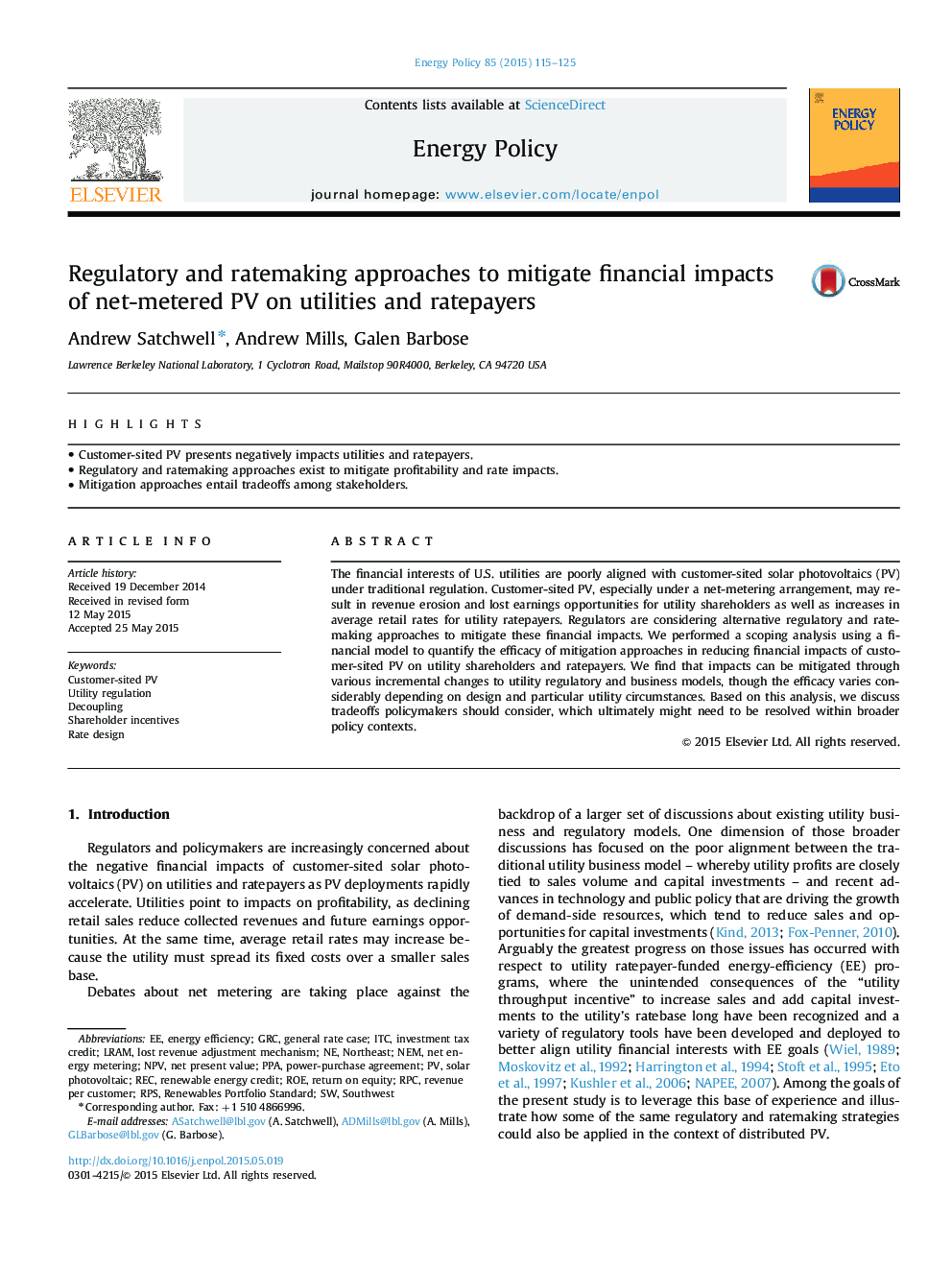| Article ID | Journal | Published Year | Pages | File Type |
|---|---|---|---|---|
| 7400498 | Energy Policy | 2015 | 11 Pages |
Abstract
The financial interests of U.S. utilities are poorly aligned with customer-sited solar photovoltaics (PV) under traditional regulation. Customer-sited PV, especially under a net-metering arrangement, may result in revenue erosion and lost earnings opportunities for utility shareholders as well as increases in average retail rates for utility ratepayers. Regulators are considering alternative regulatory and ratemaking approaches to mitigate these financial impacts. We performed a scoping analysis using a financial model to quantify the efficacy of mitigation approaches in reducing financial impacts of customer-sited PV on utility shareholders and ratepayers. We find that impacts can be mitigated through various incremental changes to utility regulatory and business models, though the efficacy varies considerably depending on design and particular utility circumstances. Based on this analysis, we discuss tradeoffs policymakers should consider, which ultimately might need to be resolved within broader policy contexts.
Keywords
Related Topics
Physical Sciences and Engineering
Energy
Energy Engineering and Power Technology
Authors
Andrew Satchwell, Andrew Mills, Galen Barbose,
